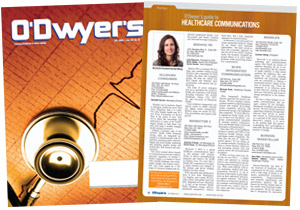|
|
Marketing automation is all the talk these days, and for good reason. A March Forbes study found that automated marketing increased the conversion of prospects into qualified leads by 53%, and a Pardot survey of marketing automation users shows that their companies’ sales revenue climbed by 34% on average after implementation.
But while marketing automation can eliminate a lot of manual work, it isn’t like a programmable thermostat you can set once and forget about. Your marketing automation strategy needs to be continually updated with new content and tactics to deliver fresh leads and insights to your sales and marketing teams. These adjustments are particularly crucial as your company grows, the healthcare market continues to change and your customers’ needs evolve.
|
|
Here are three common pain points — or “nots”— that we see among companies in the healthcare industry whose marketing automation strategy is struggling to keep pace with change, along with some advice for how to “untie” them.
Not offering sales enablement tools
When companies are focused on prospects and devising new strategies to reach them using marketing automation, it’s often easy to forget about the most important “customer” of your content — your sales team.
Sales enablement is about empowering sales representatives and equipping them with the best informational tools to support your marketing strategy. Although a less talked about concept, it is quickly becoming one of the most crucial elements of B2B marketing. Businesses that don’t make it a priority are bound to fall behind.
Avoid creating content for content’s sake. Instead, you need to understand exactly what sales representatives need from you and focus on developing that content. Start by asking sales team members about the types of conversations they are having with potential customers and learning about collateral and materials they need to help engage their prospects throughout the buying cycle.
Along with that support, creating a sales enablement program requires training, such as conducting quick in-person education sessions that deliver several actionable takeaways for your sales force. Training could also include practical exercises that lead to real assets (and a lot of kudos), such as establishing a sales library of all marketing-created content, creating an internal lead nurturing drip campaign with training resources, and empowering sales to be their own marketers by providing templates that can easily be customized and sent to prospects.
Lastly, marketing leaders should continually check in with your sales team to determine how your marketing automation platform can deliver better insights and adjust accordingly.
Not integrating automation into all efforts
A key aspect of sales enablement is supporting the sales team’s efforts with marketing automation. However, after integrating the marketing automation system with their website during implementation, too often companies quickly default to leveraging the platform as an email blast tool instead of strategically aligning it with all marketing efforts in the organization.
The main point of marketing automation is that it connects with all of your PR, marketing and digital tactics, so they all must be synchronously developed in order for the unified marketing strategy to be successful. That means creating relevant, up-to-date content assets to keep leads engaged and using some experimentation, such as with email campaigns, to determine the subject lines and copy that maximizes conversions.
We recommend developing a quarterly campaign plan to establish the overarching campaign theme, its associated events and how you’ll tie that into nurturing campaigns, social media, paid advertising, webinars and promotion on your website to increase conversions.
In addition, as you’re developing new content, whether it’s a bylined article for a healthcare IT publication, a guest blog on a partner’s site, a new data sheet or even an updated website, think about where you can use that information in your current campaigns or whether there’s an opportunity to offer it on your website as a download.
Not seeing the big picture on reporting
With a marketing automation tool and CRM in place, there’s so much that you can report on that you could almost spend all your time reporting and revising your current efforts, and lose sight of your big-picture goals.
Although the latest click-through rate or deliverability on your emails is important to the marketing team, your C-suite probably doesn’t care about those stats. Find out the metrics they care about and succinctly report on those data. Say your CEO wants to know the percentage of new customers sourced by new marketing initiatives. To deliver that metric, you would take the number of the new customers acquired in a set time period and determine what percentage started as a marketing-sourced lead. This provides a great indicator of how marketing is impacting customer acquisition and directly contributing to the bottom line.
What if the CFO wants to know how much it costs the company to acquire a customer? Simply add up all the campaign spending, advertising costs, sales and marketing salaries and anything else that contributes to your overall sales and marketing costs and then divide that by the number of new customers in that time period — that is one number that you don’t want increasing over time!
Do some digging on the types of metrics that will give your C-level executives an accurate (and meaningful) picture of marketing performance, and create reports that tell that story instead of just exporting email performance reports.
Those are only the most common marketing automation “nots” among healthcare companies that should be untied, but there are several others. By far, the most important “not” to avoid is not integrating marketing automation into your overall marketing strategy. While a crucial element, marketing automation must be supported with informative, engaging content. With a solid, comprehensive strategy, companies will drive brand awareness, establish thought leadership and increase quality lead generation, which makes sales, marketing and the C-suite happy.
* * *
Nicole Wojno is Director of Marketing at Dodge Communications.




 Lo Isidro, senior director at Real Chemistry with more than a decade of strategic communications and PA experience, has joined Narrative Strategies.
Lo Isidro, senior director at Real Chemistry with more than a decade of strategic communications and PA experience, has joined Narrative Strategies. Nelson Fernandez, former North American chair of APCO Worldwide and managing director of Burson-Marsteller, has joined Volunteers in Medicine Berkshires as director of communications and PA.
Nelson Fernandez, former North American chair of APCO Worldwide and managing director of Burson-Marsteller, has joined Volunteers in Medicine Berkshires as director of communications and PA. Lilit Bargar, who was most recently an EVP in the healthcare practice at Weber Shandwick, comes on board at GCI Health as EVP, corporate practice lead.
Lilit Bargar, who was most recently an EVP in the healthcare practice at Weber Shandwick, comes on board at GCI Health as EVP, corporate practice lead.
 Five ways that successful thought leaders are made.
Five ways that successful thought leaders are made.


 Have a comment? Send it to
Have a comment? Send it to 
No comments have been submitted for this story yet.